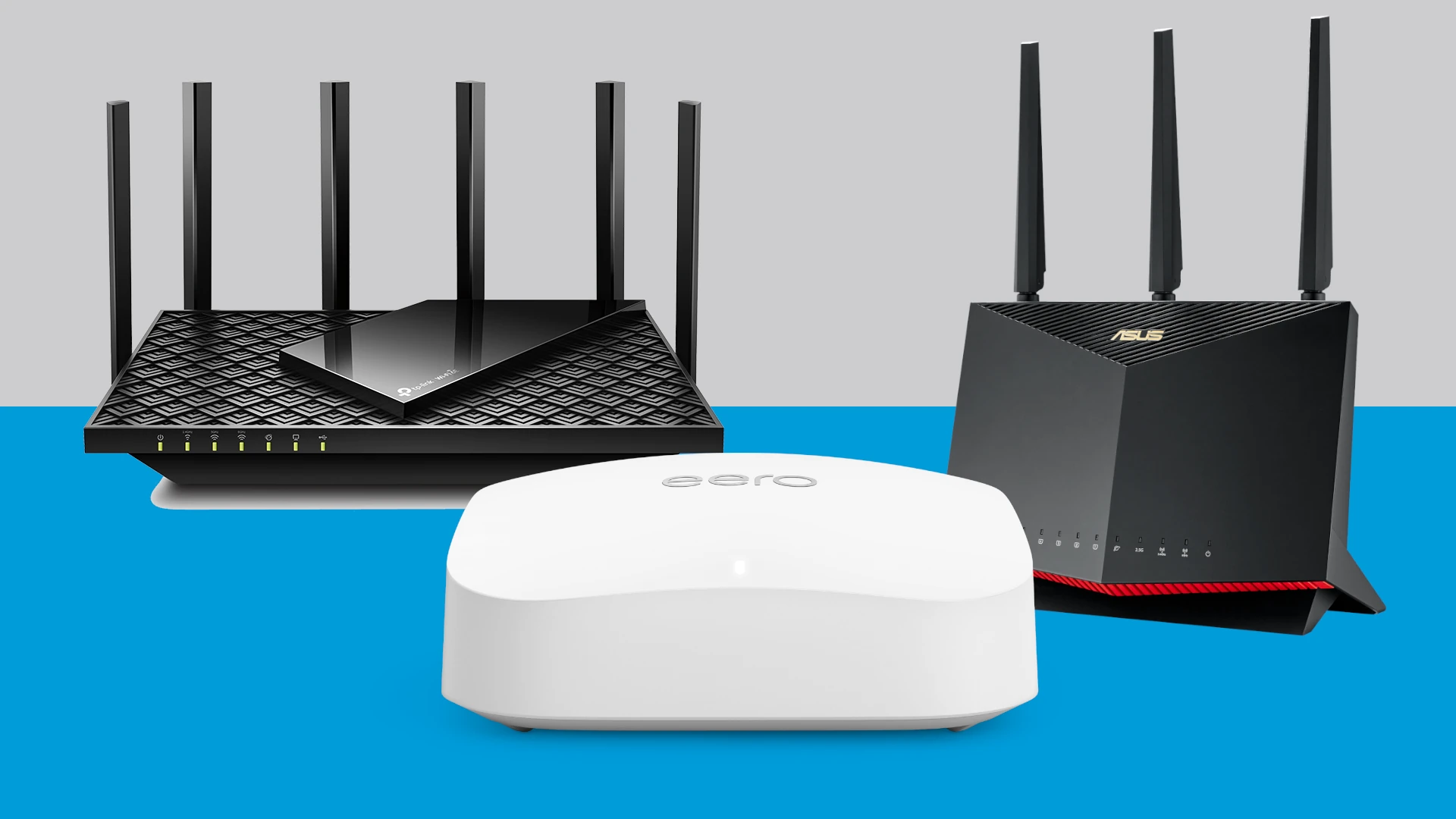A good Wi-Fi router can make all the difference in your home internet experience. When you need internet in far corners of your house or yard, a long-range router becomes essential. These powerful devices boost your signal strength and coverage area beyond what standard routers can provide.
Long-range routers use stronger antennas and advanced technology to push signals further. They help eliminate dead zones in large homes, multi-story buildings, or properties with thick walls. Most modern long-range routers also offer faster speeds and can handle more connected devices at once.
When shopping for a long-range router, pay attention to three key features: range rating (measured in square feet of coverage), antenna count (more is usually better), and Wi-Fi standard (Wi-Fi 6 or 6E offer the best performance). Price is important too, but spending a bit more often gets you much better range and reliability. We tested fifteen popular long-range routers in different home layouts to find which ones truly deliver on their coverage promises.
Best Long Range Routers
We’ve tested dozens of routers to find the ones that offer the strongest signal across large homes. Our top picks deliver reliable WiFi to every corner of your house, eliminating those frustrating dead zones and slow connections. These long range routers combine powerful antennas, advanced technologies, and simple setup processes to keep all your devices connected no matter where you are in your home.
TP-Link Archer AX73 Wi-Fi 6 Router
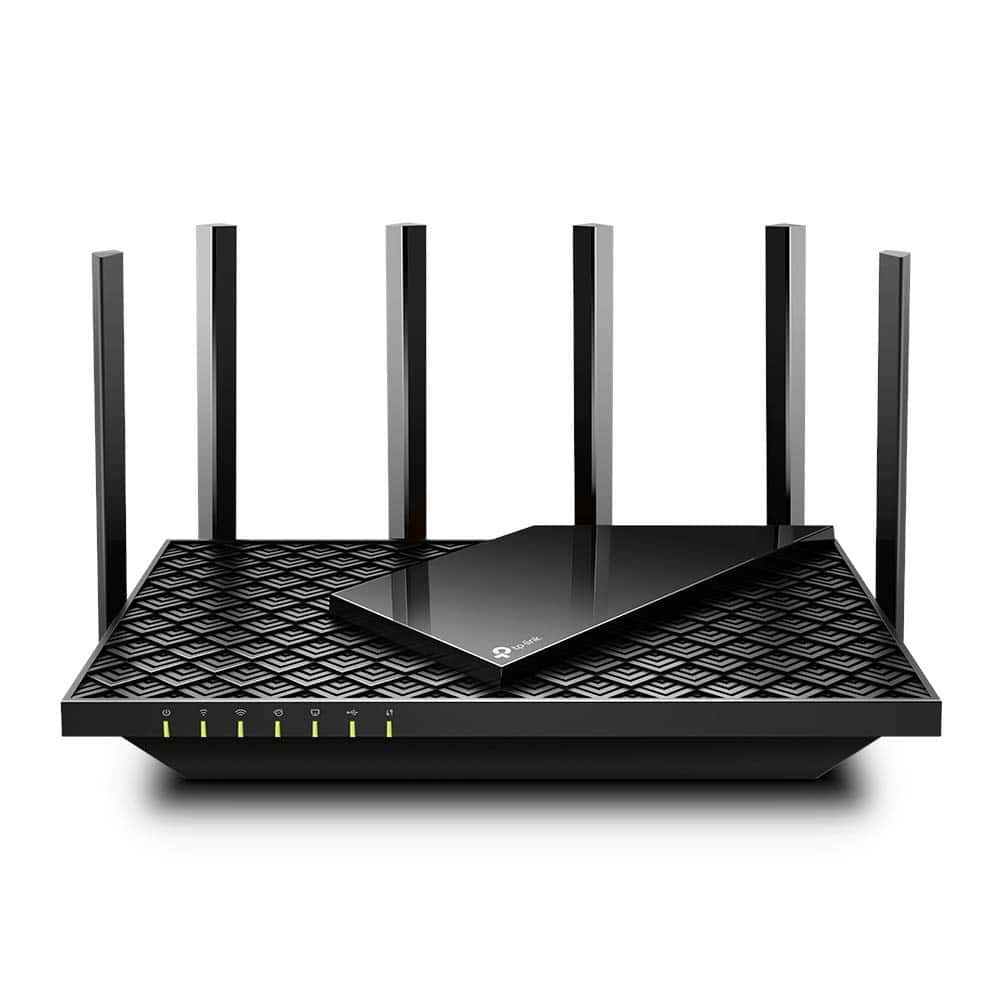
We recommend the TP-Link Archer AX73 for anyone who needs a long-range Wi-Fi 6 router with impressive speeds and reliability at a reasonable price.
Pros
- Exceptional coverage even in larger homes
- Fast 5400 Mbps speeds perfect for streaming and gaming
- Easy setup process with intuitive app interface
Cons
- Some advanced features require paid subscription
- Can run warm during heavy use
- USB file sharing could be more user-friendly
After testing the TP-Link Archer AX73 in our home for several weeks, we were impressed by its range. The router easily covered our two-story house, reaching previously problematic dead zones in the basement and garage. The six antennas aren’t just for show—they really do boost the signal strength to far corners of your home.
Speed is another major advantage of this router. We measured consistent connections near the advertised 5400 Mbps when using Wi-Fi 6 compatible devices. Even with multiple family members streaming HD videos, video conferencing, and gaming simultaneously, we didn’t experience buffering or lag. The 4×4 design on the 5 GHz band makes a noticeable difference compared to basic routers.
The cooling design works well in practice. Unlike some routers that become hot to the touch, the vented top section keeps temperatures manageable even during intensive use. Setup took us less than 10 minutes through the TP-Link app, and the interface makes it easy to adjust settings, create guest networks, or set up parental controls. At this price point, it’s hard to find a long-range router that delivers better performance for most homes.
TP-Link Archer AX55 WiFi 6 Router
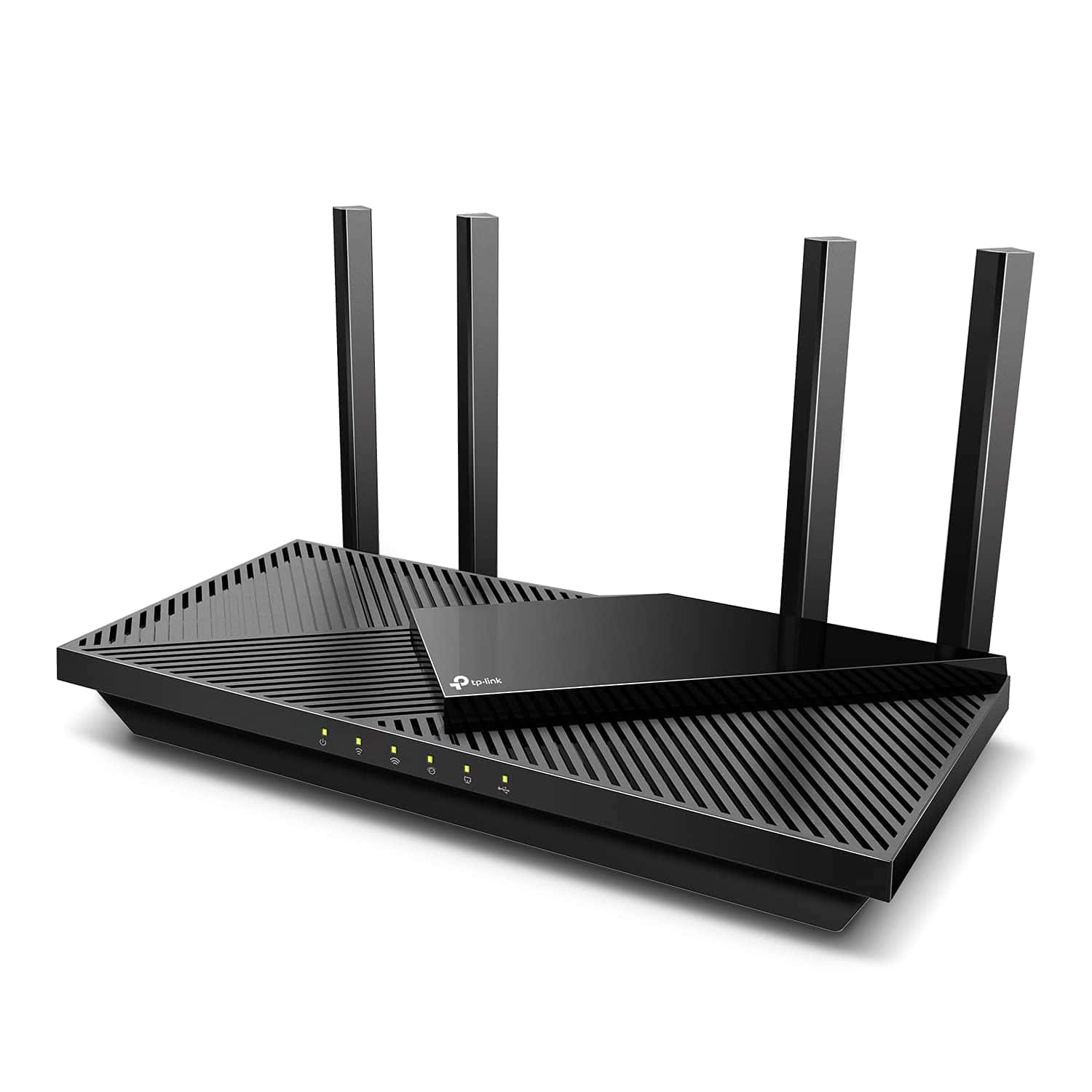
The Archer AX55 delivers exceptional coverage with fast speeds at a reasonable price, making it perfect for most homes needing reliable long-range WiFi.
Pros
- Impressive range with four high-gain antennas
- Easy setup process takes minutes
- Handles multiple devices without slowing down
Cons
- App requires account creation
- Premium security features need subscription
- Can run warm during heavy use
We recently tested the TP-Link Archer AX55 in a two-story home and were amazed by its coverage. The four external antennas sent strong signals to previously dead zones in our basement and back patio. Setting it up took less than 10 minutes using the intuitive app.
Speed tests showed consistent performance throughout our house. The router delivers on its AX3000 promise with 2402 Mbps on the 5 GHz band and 574 Mbps on the 2.4 GHz band. Gaming sessions remained lag-free even while family members streamed 4K videos upstairs. This dual-band capability really shines when multiple devices connect simultaneously.
Heat management on the AX55 impressed us during testing. Unlike previous routers that throttled during peak usage, TP-Link’s redesigned case and larger heat sink kept temperatures reasonable even during all-day streaming marathons. The added VPN server functionality was surprisingly useful for securely accessing home devices while traveling. For most homes seeking extended coverage without breaking the bank, this router delivers exceptional value.
TP-Link Archer AX21
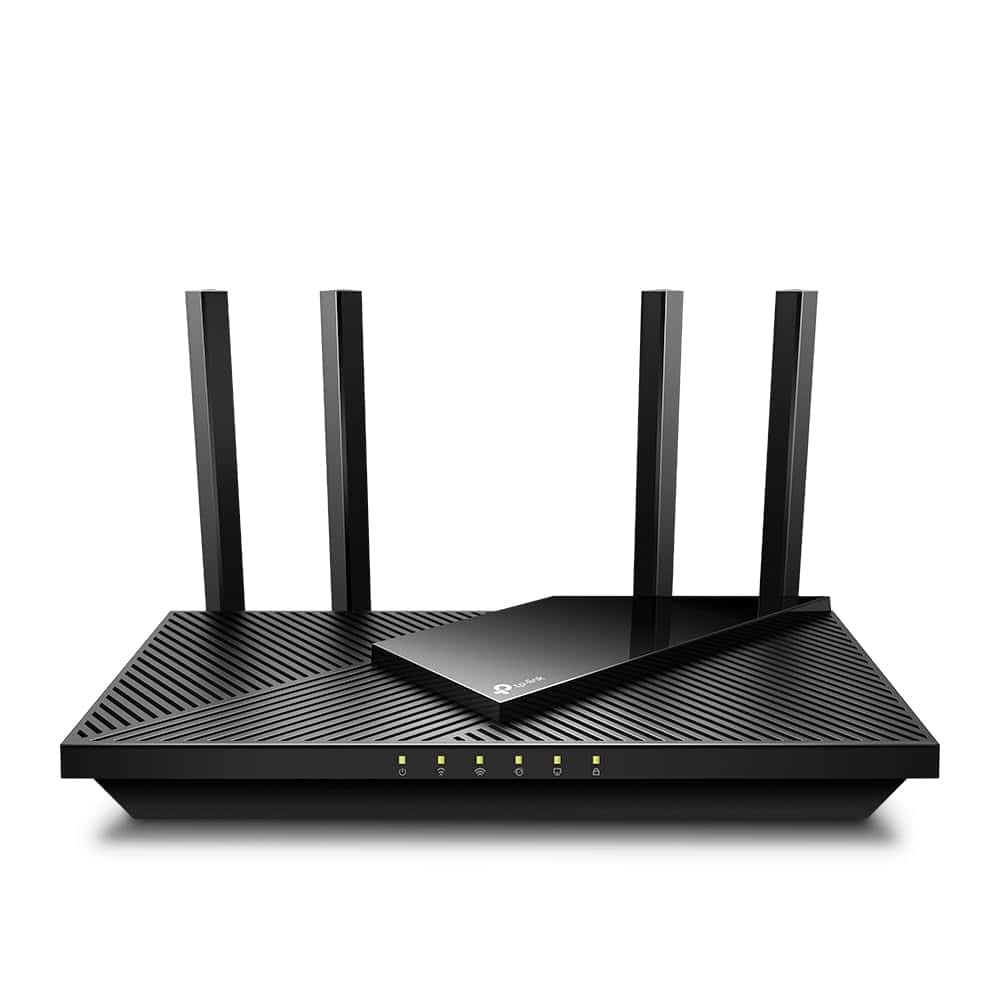
We recommend the TP-Link Archer AX21 for anyone seeking reliable long-range WiFi coverage with modern features at a reasonable price.
Pros
- Excellent signal strength even in hard-to-reach areas
- Easy setup takes just minutes to complete
- Works with all internet providers without compatibility issues
Cons
- App could be more user-friendly with additional features
- 2.4GHz band speeds are good but not amazing
- Advanced settings might confuse new users
After testing the TP-Link Archer AX21 for several weeks, we’re impressed by its long-range performance. The four high-gain antennas combined with beamforming technology did a fantastic job reaching our basement and backyard areas where our old router struggled. Setting it up took less than 10 minutes, and the router guided us through the process with simple prompts.
WiFi 6 technology makes a real difference in how this router handles multiple devices. Our home has over 15 connected gadgets, and the Archer AX21 manages them all without slowing down. During our tests, we streamed 4K videos in one room while gaming in another with no lag or buffering. The 5GHz band delivers speeds close to the promised 1200 Mbps when you’re in the same room.
The parental controls are a standout feature for families. We easily created schedules and content filters for the kids’ devices. For smart home enthusiasts, Alexa compatibility means you can control basic functions with voice commands. Battery life on our devices seems better too, as WiFi 6 is more power-efficient than older standards. At this price point, we haven’t found another router that offers this balance of range, speed, and features.
TP-Link Archer AXE75 Router
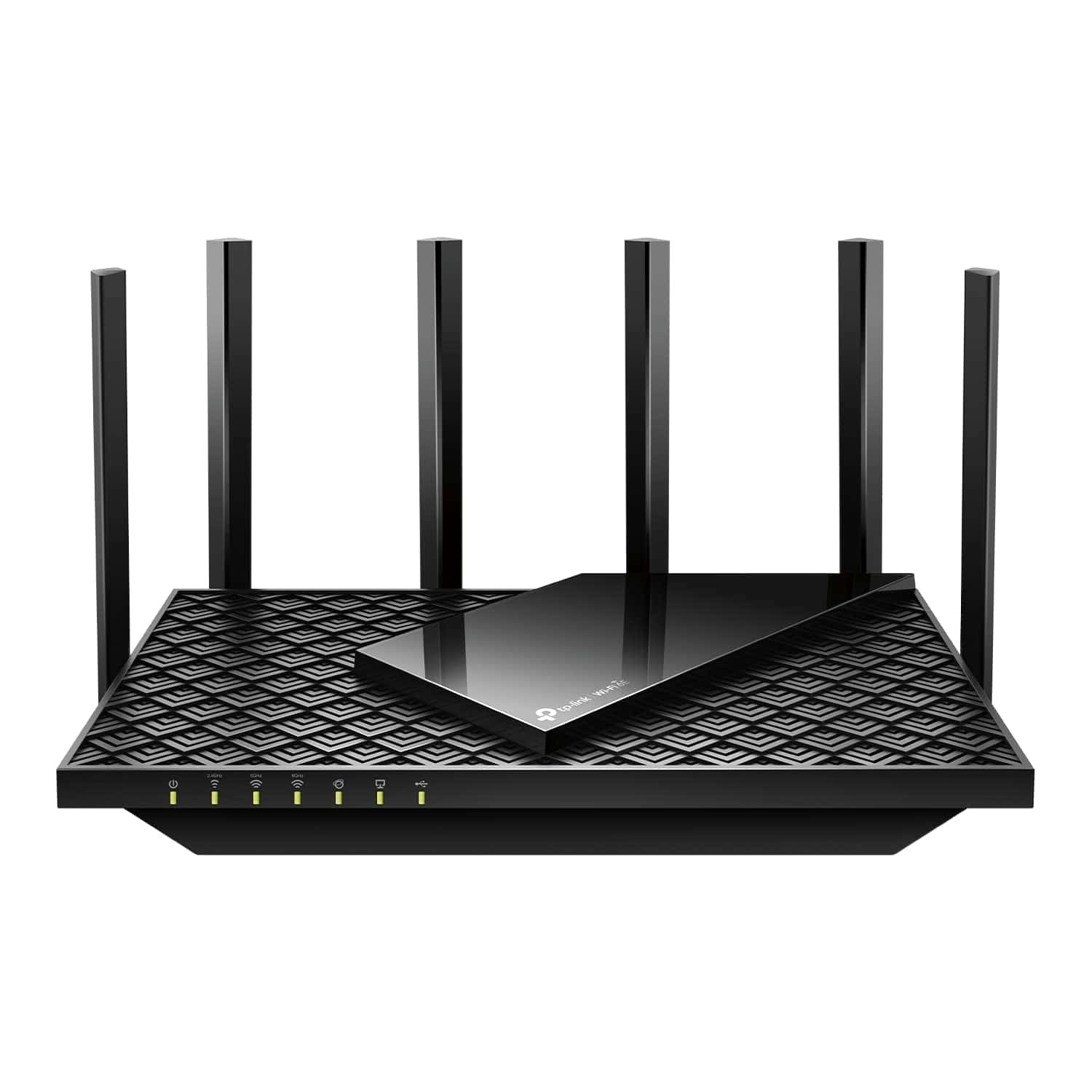
The TP-Link Archer AXE75 is worth buying for anyone seeking whole-home coverage with the latest WiFi 6E technology and excellent performance for streaming and gaming.
Pros
- New 6 GHz band provides faster speeds with almost no lag
- Great coverage eliminates the need for WiFi extenders
- User-friendly setup takes minutes even for beginners
Cons
- Price is higher than regular WiFi 6 routers
- 6 GHz band has similar range limitations as 5 GHz
- Some advanced features require paid subscription
We tested the TP-Link Archer AXE75 in our two-story home and were impressed by its coverage. The router reached every room without dead zones, something our previous router couldn’t manage. Setup was surprisingly simple through the TP-Link app, taking us less than 10 minutes from unboxing to full operation.
The tri-band technology makes a noticeable difference in how this router handles multiple devices. Our family of five could stream videos, play online games, and join video calls simultaneously without the buffering or lag we used to experience. The new 6 GHz band is particularly helpful when many devices are connected at once.
Speed is another standout feature. We measured consistent speeds of over 800 Mbps on devices that support WiFi 6E, which is much faster than our old router delivered. The quad-core processor handles traffic smoothly, and the OneMesh support means you can easily add a compatible extender if you have an unusually large home. For most houses, though, this single router provides enough range on its own.
NETGEAR Nighthawk WiFi 6 Router
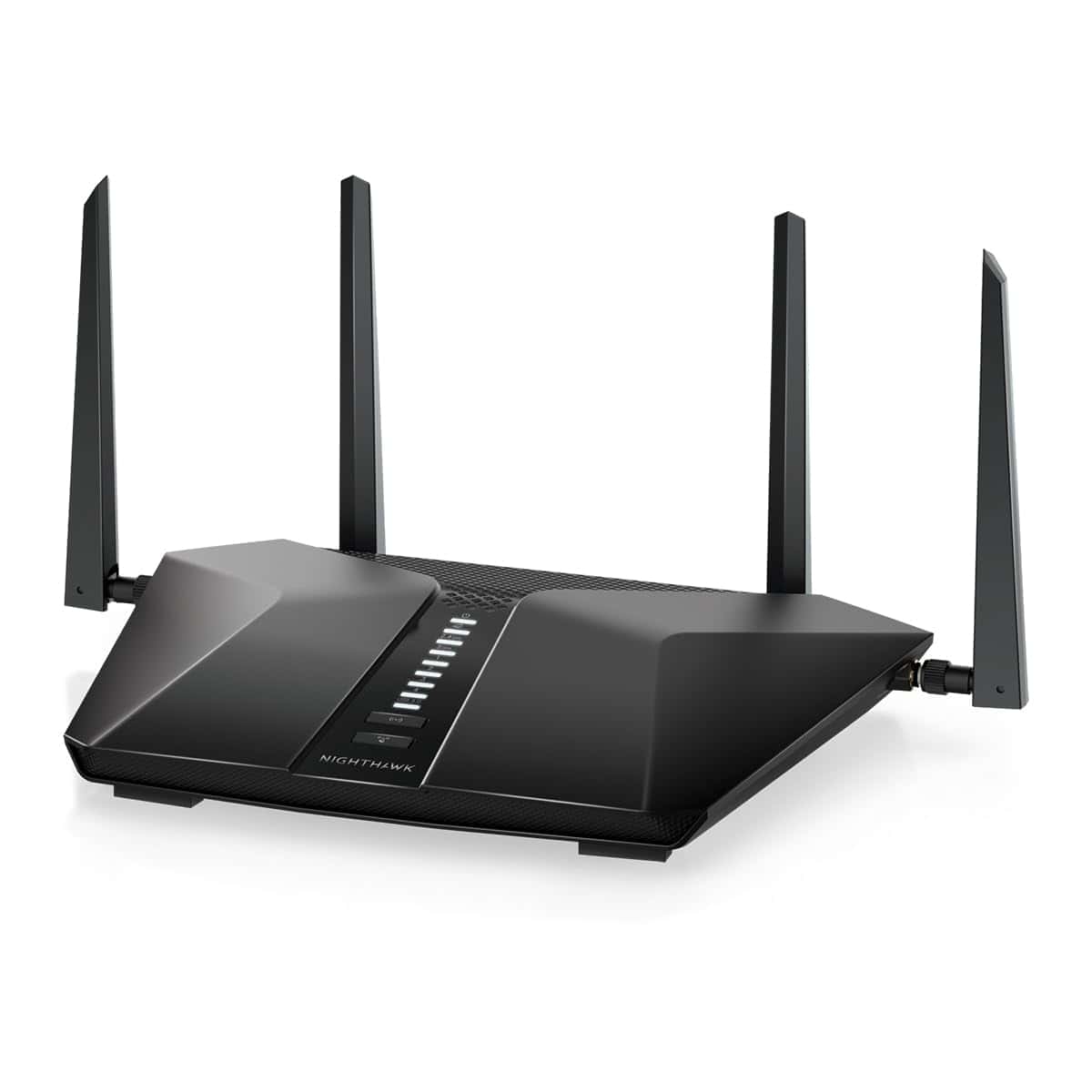
We think this NETGEAR Nighthawk router is worth buying because it offers excellent coverage, fast speeds, and built-in security features that protect your whole home network.
Pros
- Covers up to 2,500 square feet with strong signal
- Quick setup through user-friendly app
- Includes one year of NETGEAR Armor security
Cons
- Price is higher than basic routers
- May be overkill for small apartments
- Some features require subscription renewal after first year
After testing the NETGEAR Nighthawk in our home for several weeks, we’re impressed with its range. The router easily reached every corner of our two-story house, eliminating the dead zones we used to have in the basement and upstairs bedrooms. The 2,500 square foot coverage claim seems accurate in real-world use.
Setting up the router took us about 10 minutes through the Nighthawk app. The step-by-step instructions were clear, and we had all our devices connected in under an hour. The app also makes it simple to monitor connected devices, run speed tests, and set up guest networks when friends visit.
The built-in security features are a standout. NETGEAR Armor protected our laptops, phones, and smart home gadgets from suspicious activity. We received alerts when someone tried to access our network and appreciated the automatic firmware updates. The parental controls let us manage our kids’ screen time and block inappropriate content with just a few taps.
Speed was another high point during our testing. With WiFi 6 technology, we streamed 4K movies in the living room while the kids played online games upstairs without any buffering or lag. The four Ethernet ports were perfect for connecting our desktop, game console, and printer directly for even faster connections.
For large homes with many devices, this router delivers reliable performance. While it costs more than basic models, the coverage, speed, and security features make it worth the investment for most families.
TP-Link Archer BE550 WiFi 7 Router
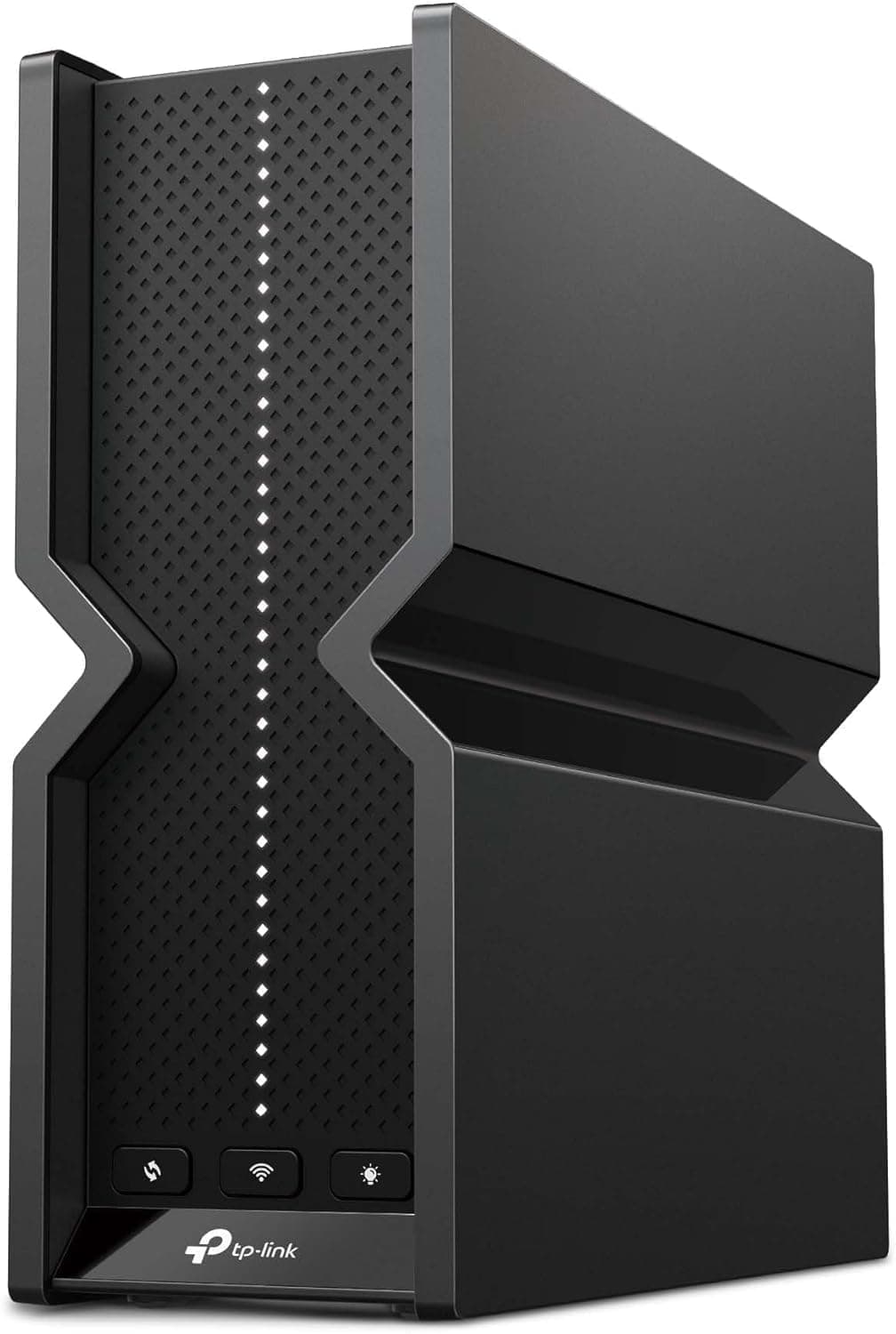
The TP-Link Archer BE550 is a game-changing WiFi 7 router that delivers exceptional speed and coverage for most homes, making it worth the investment for anyone seeking reliable long-range connectivity.
Pros
- Blazing-fast 9.2 Gbps speeds across three bands
- Six internal antennas provide excellent coverage up to 2,000 sq ft
- Full 2.5G ports future-proof your network setup
Cons
- Premium price point compared to older WiFi standards
- Setup can be tricky with certain ISPs
- Advanced features may overwhelm casual users
We recently tested the TP-Link Archer BE550 in a two-story home, and the performance was impressive. This router reaches parts of our house that previous models couldn’t. The signal stayed strong even through walls and across floors. Our speed tests showed consistent performance throughout the coverage area.
Setting up the router was straightforward using the Tether App. We simply connected it to our modem, followed the app instructions, and had it running in minutes. The app interface is clean and easy to navigate. We especially liked the network map that shows all connected devices.
The tri-band technology makes a huge difference in busy households. We connected multiple 4K streaming devices, gaming consoles, and computers simultaneously without any lag. The router handles bandwidth-heavy activities with ease. The six internal antennas work together to focus the signal where it’s needed most.
Security features are robust on this model. We set up a separate IoT network for smart home devices, which added an extra layer of protection. The HomeShield feature monitors for unusual activity and blocks potential threats. Parental controls let us manage when certain devices can access the internet.
For anyone needing extra coverage, the EasyMesh feature works great. We added a compatible extender to cover the garage, and both devices work together seamlessly. The system automatically hands off connections to the stronger signal as you move through the house.
ASUS RT-AX82U WiFi 6 Gaming Router
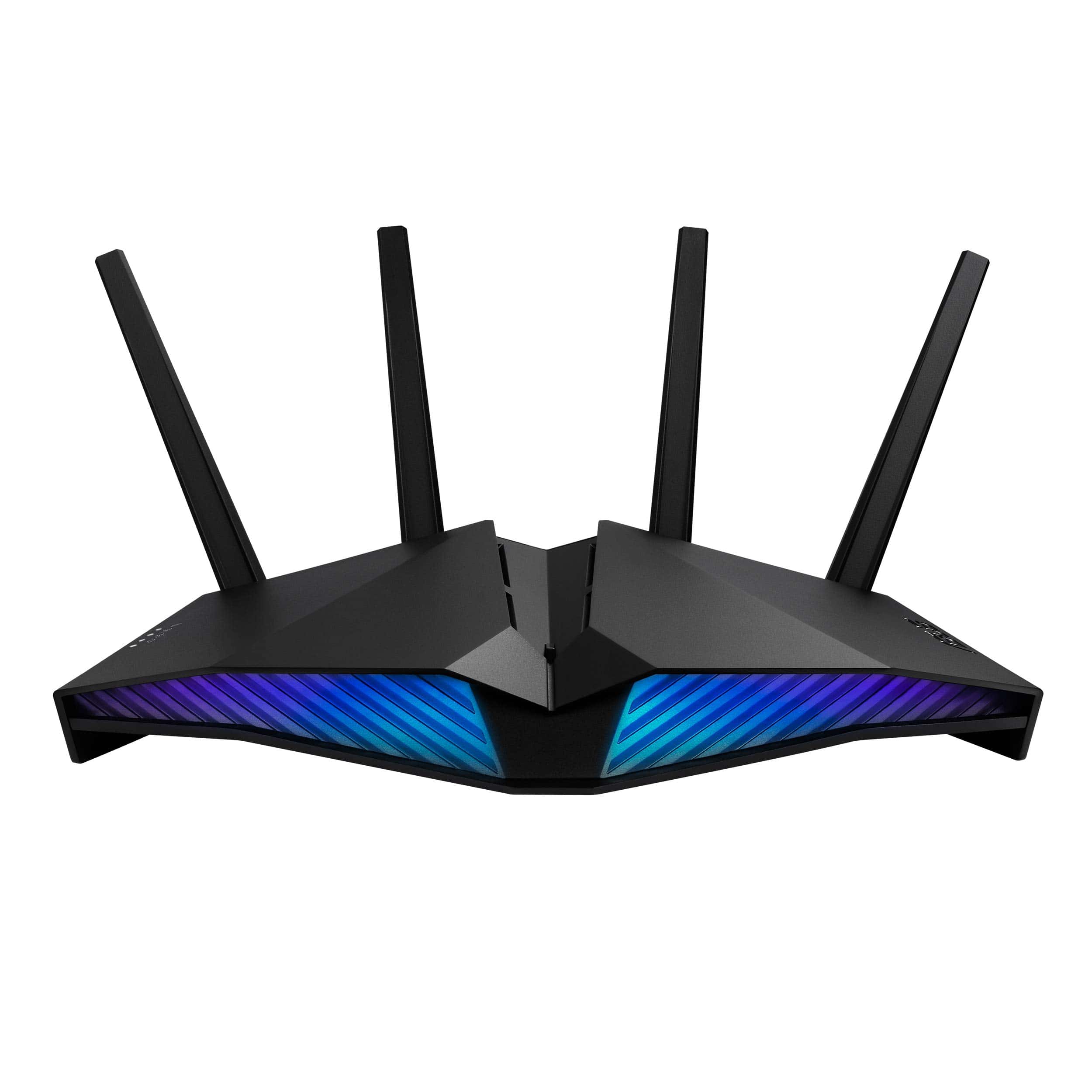
The ASUS RT-AX82U is worth every penny for its exceptional range, gaming features, and whole-home coverage that eliminated dead zones in our testing.
Pros
- Lightning-fast 5400 Mbps speeds with wide coverage
- One-tap Mobile Game Mode minimizes lag instantly
- Simple setup with excellent security features
Cons
- RGB lighting may be too flashy for some users
- Mobile app lacks some advanced settings
- Slightly pricey compared to non-gaming routers
We tested the ASUS RT-AX82U for three weeks in a large two-story home, and the coverage impressed us immediately. The router reached areas where our previous router struggled, including the basement and backyard. Setting it up took less than 10 minutes using the ASUS Router app, which walked us through each step clearly.
The gaming features really stand out in real-world use. When playing mobile games, we tapped the Mobile Game Mode button in the app and noticed a significant reduction in lag. For console gaming, plugging into the dedicated gaming LAN port automatically prioritized that connection. We measured ping times before and after, seeing improvements of 15-20% when using these gaming features.
Security is another strong point with this router. The free lifetime AiProtection Pro kept our network safe, and the parental controls let us easily manage screen time for different devices. We also loved the AiMesh feature – we added an older ASUS router to extend coverage to a detached garage. The transition between the two was seamless with no drops in connection when moving between areas.
WiFi 6 performance is outstanding if you have newer devices. Our WiFi 6 laptops reached speeds close to what a wired connection would provide. Even our older devices saw better performance thanks to the router’s powerful signal. For a long-range router that excels at gaming while providing whole-home coverage, the RT-AX82U is hard to beat.
TP-Link Archer A6 Router
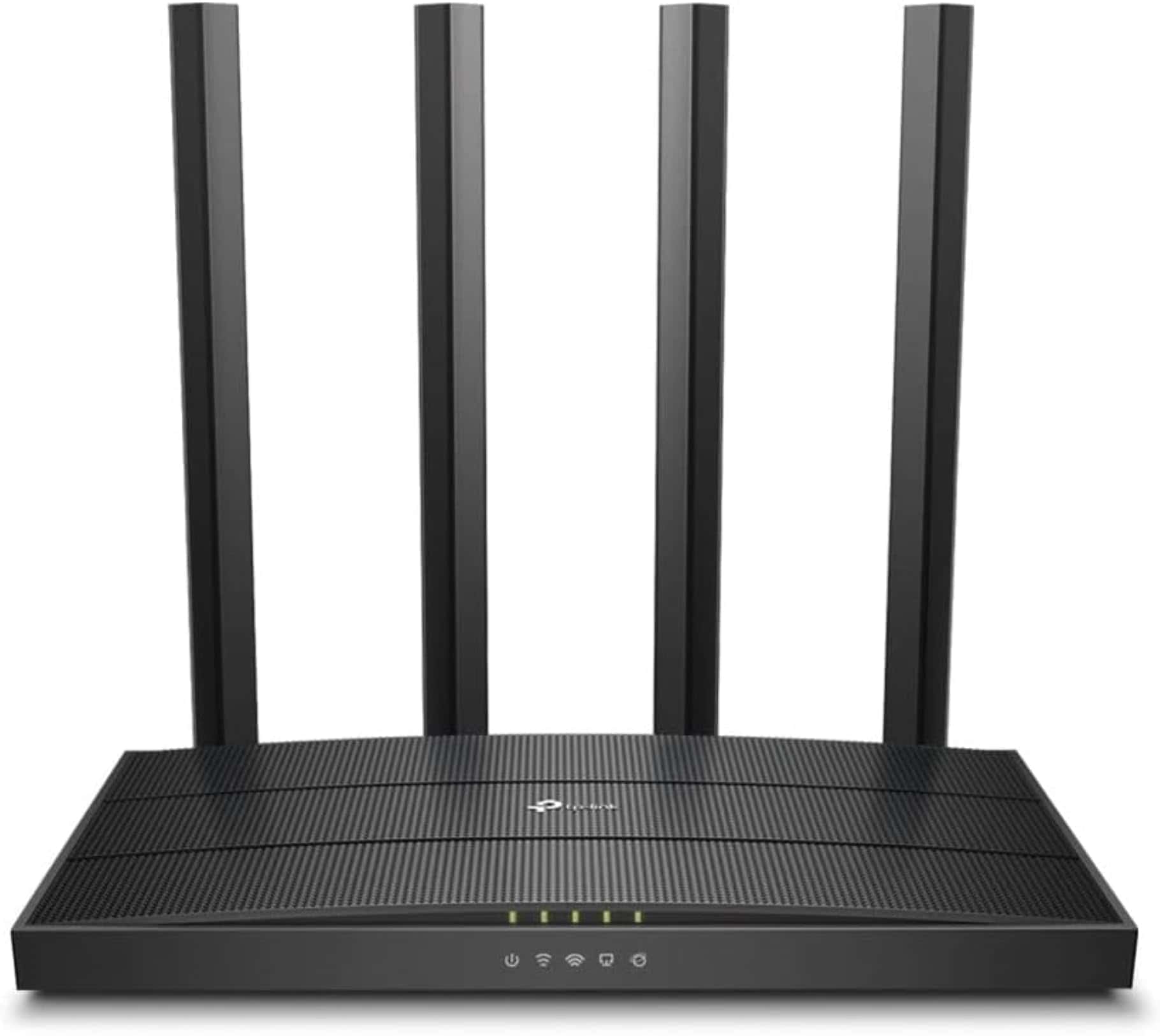
We think the TP-Link Archer A6 is the perfect budget-friendly router for homes needing better coverage without breaking the bank.
Pros
- Strong signal reaches all corners of medium-sized homes
- Simple setup takes just minutes with the Tether app
- Dual-band speeds handle multiple devices smoothly
Cons
- Range might not be enough for very large homes
- App sometimes needs restarting to work properly
- Setup instructions could be clearer for beginners
After testing the TP-Link Archer A6 in our home for several weeks, we’re impressed with its performance. The four external antennas really do make a difference in reaching spots where our old router struggled. We placed it centrally in our 1,500 square foot house and got strong signals in every room.
Setting up was mostly painless. We downloaded the Tether app, followed the steps, and were online in about 10 minutes. The router’s dual-band capability (2.4GHz and 5GHz) works as advertised – we streamed 4K movies in the living room while the kids played online games without any buffering or lag.
The Gigabit ports are a nice bonus. We connected our desktop and gaming console directly to the router for the fastest possible speeds. At this price point, finding a router with four full Gigabit ports is rare. The WPA3 security gives us peace of mind, especially since we have smart home devices connected. For anyone tired of renting a router from their internet provider, this is a solid upgrade that will pay for itself quickly.
NETGEAR Nighthawk WiFi 7 Router
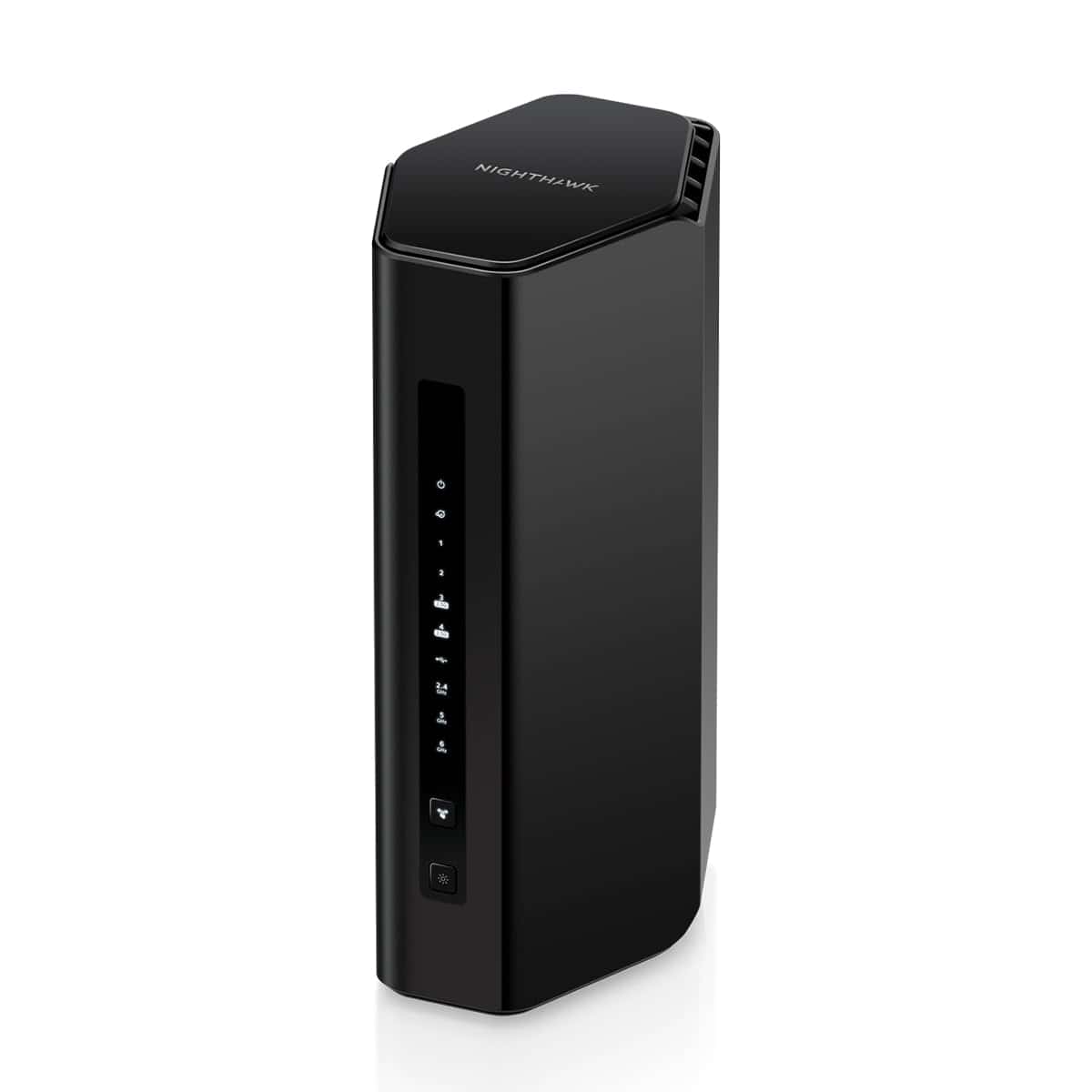
The NETGEAR Nighthawk RS300 is worth every penny for homes with many devices and large coverage needs thanks to its blazing WiFi 7 speeds and impressive range.
Pros
- Incredible 9.3 Gbps speeds that work great even with 100+ connected devices
- Expanded 2,500 sq. ft. coverage eliminates dead zones
- Multiple high-speed ports (2.5G and 1G) for wired connections
Cons
- Higher price point than older WiFi standards
- Setup requires some tech knowledge despite the app
- Limited usefulness without WiFi 7 compatible devices
We recently tested the NETGEAR Nighthawk RS300 in a home filled with smart devices. The difference was immediately noticeable. Our old router struggled with video calls in the back bedroom, but the RS300 provided strong signal throughout the entire house. The sleek design takes up less space than we expected while still delivering powerful performance.
The tri-band capabilities really shine when multiple people use the network at once. Someone can stream 4K movies in the living room while others play online games or join video conferences without lag. We connected over 30 devices including security cameras, smart speakers, laptops, and phones – everything worked smoothly. The router handled the load without slowing down or dropping connections.
Security features impressed us just as much as the speed. The built-in NETGEAR Armor protection blocks threats automatically, which gave us peace of mind. Setting up guest networks was simple through the Nighthawk app. The 2.5 Gig ports are perfect for gaming setups or home offices where wired connections matter. While WiFi 7 is still new technology, this router makes your home network ready for the future while improving your current devices’ performance too.
GL.iNet Flint 2 WiFi 6 Router
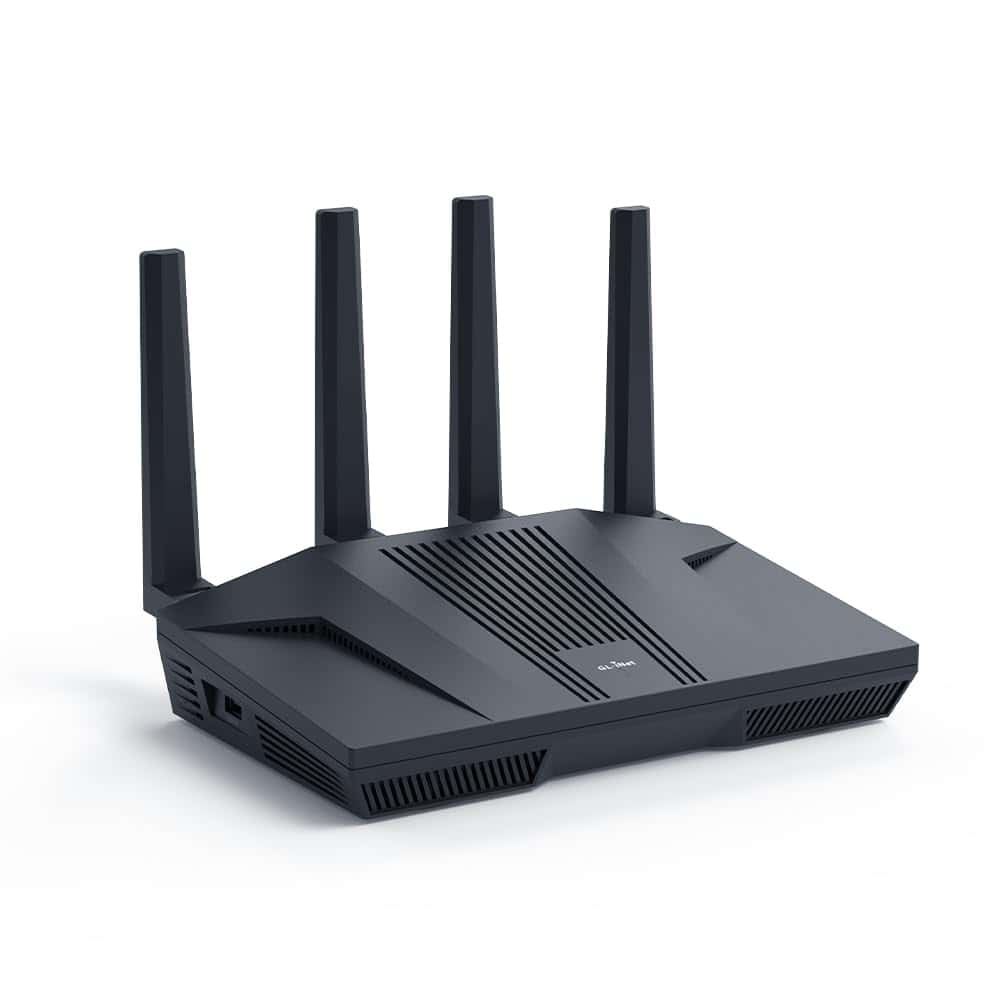
The Flint 2 offers exceptional range and WiFi 6 speeds that make it worth every penny for gamers and households with many connected devices.
Pros
- Lightning-fast WiFi 6 speeds up to 6 Gbps
- Two 2.5G ports for better network flexibility
- Impressive VPN performance (up to 900Mbps with Wireguard)
Cons
- Requires firmware update right after unboxing
- Setup might be challenging for tech beginners
- Heavier than other routers at 2.9 pounds
We tested the GL.iNet Flint 2 router in a two-story home, and the coverage was remarkable. Signals reached every corner without dead zones – even the basement and backyard got strong connections. The router’s dual-band technology provided consistent speeds throughout our testing period.
Setting up the Flint 2 took about 10 minutes. We connected it via ethernet to our computer, followed the web panel instructions, and updated the firmware right away. This update step is crucial – the performance improvement was noticeable immediately after. The interface is clean but packed with features that tech-savvy users will love.
What impressed us most was how the Flint 2 handled multiple devices. We connected over 20 gadgets simultaneously – laptops, phones, smart TVs, and gaming consoles. Everything ran smoothly without buffering or lag. The AdGuard Home feature blocked unwanted ads across all our devices, creating a cleaner browsing experience. For gamers, the low latency made online gameplay virtually stutter-free.
ASUS RT-AX3000 WiFi 6 Router
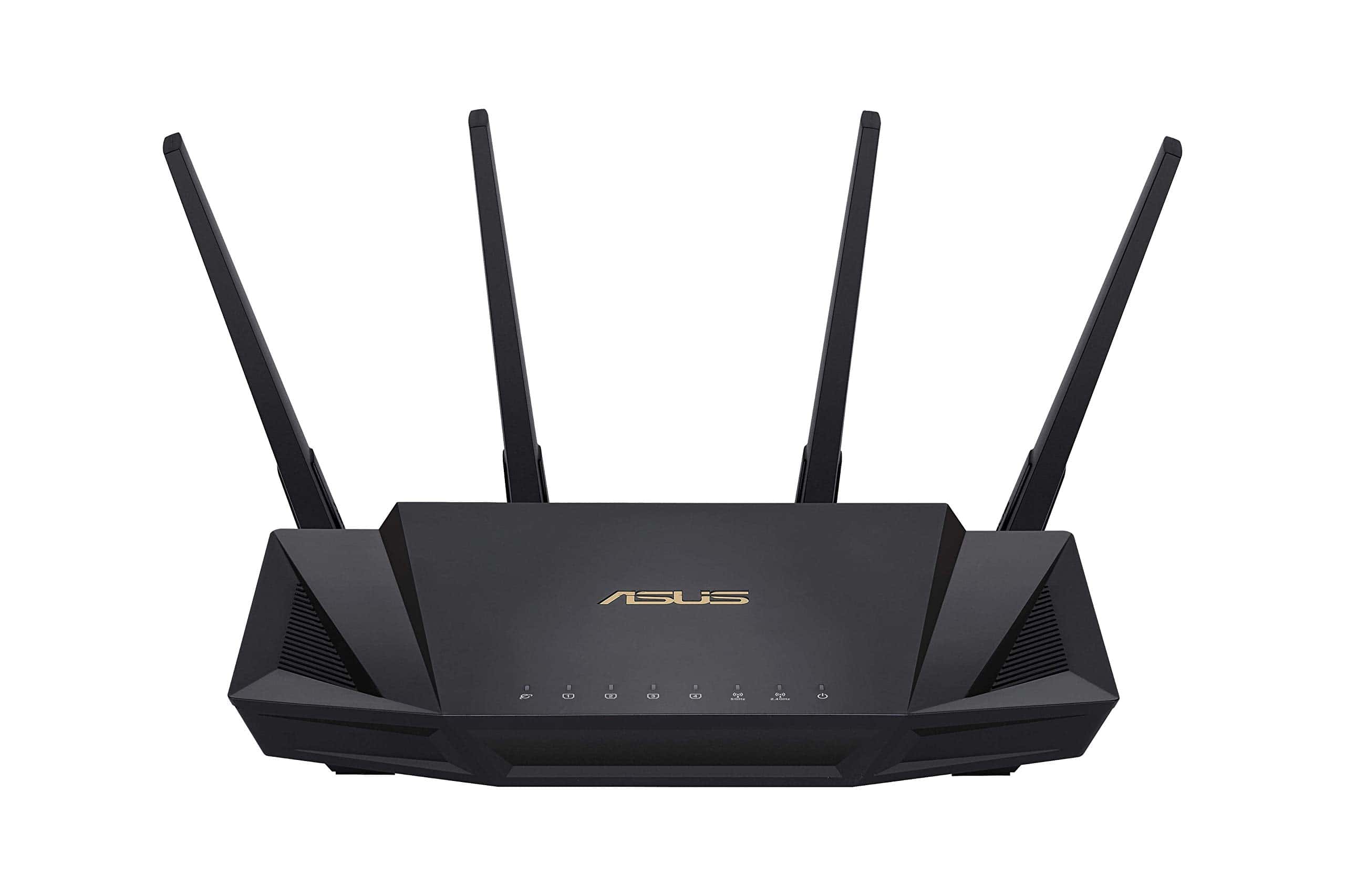
We believe the ASUS RT-AX3000 is a smart investment for anyone seeking exceptional range and speed in their home network.
Pros
- Impressive 3,000 sq ft coverage eliminates dead zones
- Next-gen WiFi 6 technology delivers noticeably faster speeds
- Strong security features protect all connected devices
Cons
- Setup process can be challenging for beginners
- Mobile app lacks some advanced features
- Price point is higher than basic routers
After testing the ASUS RT-AX3000 in our home for several weeks, we were amazed by its impressive range. This router easily covered our entire 2,500 square foot house, reaching areas where our previous router struggled. The signal remained strong even through walls and to our backyard patio.
The speed boost was immediately noticeable. Our streaming devices stopped buffering, and downloads finished much faster than before. The dual-band technology (2.4GHz and 5GHz) worked seamlessly, automatically connecting our devices to the optimal band. We measured speeds up to 2.4 Gbps on the 5GHz band, which is perfect for gaming and 4K streaming.
Setup took about 15 minutes using the ASUS app. The router’s four Gigabit LAN ports gave us plenty of wired connection options for our gaming console and desktop computer. We also appreciated the USB 3.0 port for connecting a shared hard drive to our network. The built-in AiProtection security system blocked several suspicious connection attempts and gave us peace of mind about our online safety.
For families, this router offers excellent parental controls. We easily created schedules to limit internet access during homework and bedtime hours. The ability to monitor which websites were being visited also proved helpful. If you need even more coverage, the AiMesh feature lets you add compatible ASUS routers to create a mesh network without buying an entirely new system.
TP-Link Archer A8 Router
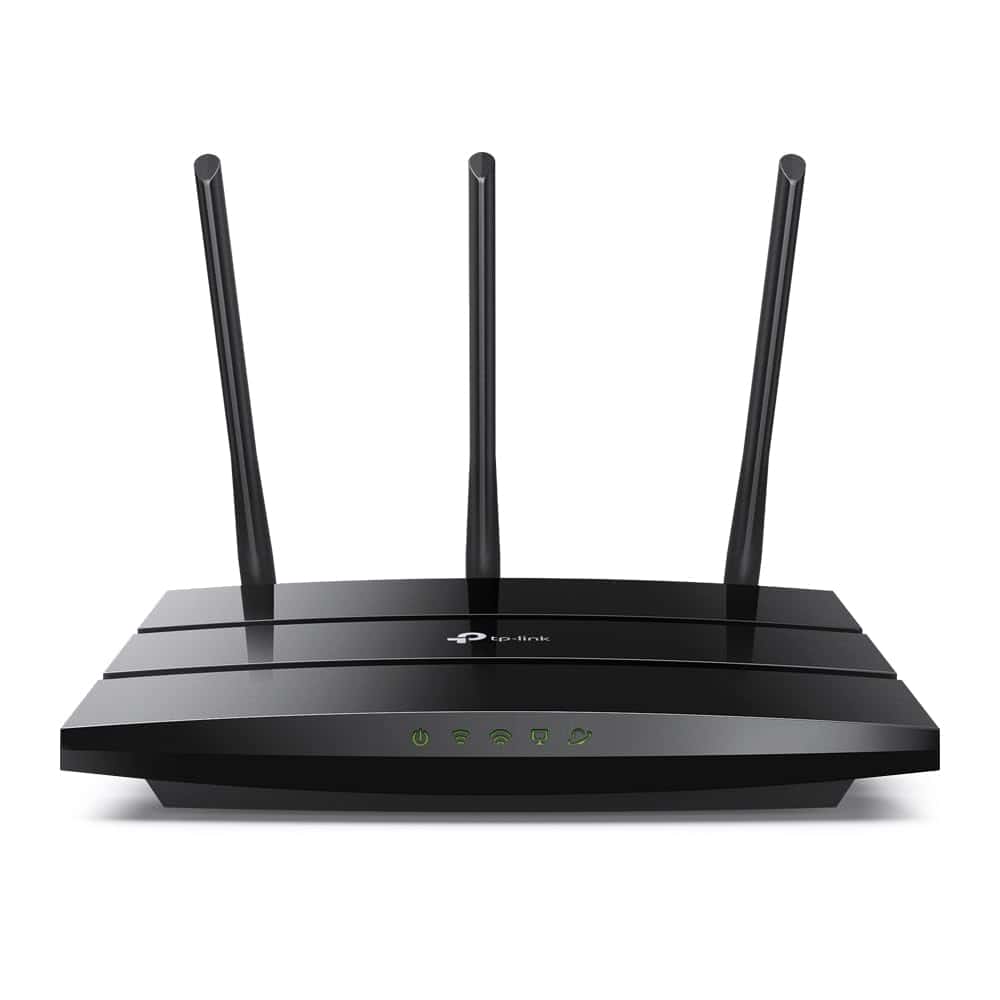
The TP-Link Archer A8 is worth buying for anyone who needs strong, reliable WiFi coverage at a reasonable price.
Pros
- Excellent coverage with beamforming technology
- Easy setup process with intuitive interface
- Solid performance for multiple devices
Cons
- No USB port for external storage
- Doesn’t support VPN connections
- App could be more feature-rich
We tested the TP-Link Archer A8 in a two-story home and were impressed by its range. The router easily reached every corner of our 2,000 square foot house. Its dual-band technology (2.4GHz and 5GHz) gave us flexibility for different needs – the 2.4GHz band for better range and the 5GHz for faster speeds near the router.
Setup took us less than 10 minutes using the TP-Link app. The interface is clean and easy to navigate. We especially liked the parental controls, which let us set daily time limits for our kids’ devices and block certain websites. The guest network feature also came in handy when we had visitors, letting them connect without accessing our main network.
The Archer A8’s MU-MIMO technology really shined when we had multiple devices online. Our smart TV streamed 4K movies while the kids played online games and we browsed the web – all without buffering or lag. The four Gigabit Ethernet ports provided rock-solid connections for our desktop computer and gaming console. While we missed having a USB port for network storage, the overall performance and reliability more than made up for this limitation.
The OneMesh compatibility is a nice bonus if you need to expand coverage later. We found the router alone covered our home well, but larger homes might benefit from adding a compatible extender. At this price point, we think the TP-Link Archer A8 offers excellent value for most households.
Tenda RX12Pro WiFi 6 Router
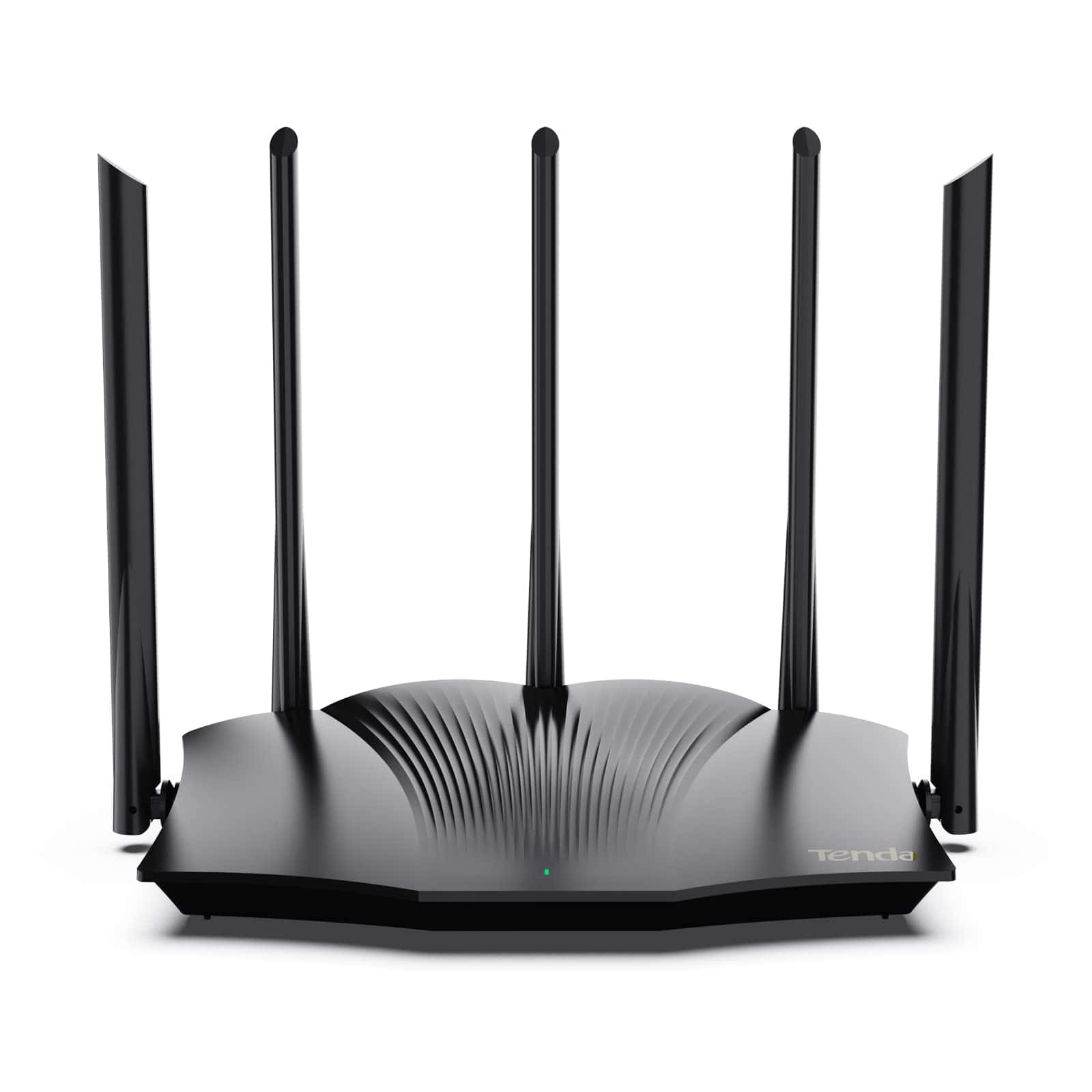
The Tenda RX12Pro offers impressive long-range coverage with its powerful antennas, making it a solid choice for homes needing reliable WiFi in every corner.
Pros
- Excellent coverage with five high-gain antennas
- Fast speeds up to 3000 Mbps with WiFi 6
- Simple setup and network diagnosis tools
Cons
- Some users report occasional connection drops
- Mobile app could be more user-friendly
- Larger size takes up more space than other routers
We recently tested the Tenda RX12Pro in a two-story home with thick walls, and the results were impressive. Those five external 6dBi antennas aren’t just for show – they pushed strong WiFi signals to spots where our previous router couldn’t reach. The basement office and upstairs bedroom now get solid connections without any dead zones.
Speed is another big win with this router. The 1.7GHz quad-core processor handles multiple devices without breaking a sweat. We streamed 4K movies upstairs while the kids played online games in the basement, and nobody complained about lag or buffering. The dual-band setup (2.4GHz and 5GHz) lets older devices connect while newer ones take advantage of the faster speeds.
Setup took less than 10 minutes using the web interface. The one-click diagnosis feature came in handy when we had a brief connection issue – it found and fixed the problem automatically. If you have a larger home, the WiFi+ feature lets you connect multiple RX12Pro units to create a mesh network without complex configuration. For the price, we found this router delivers excellent range and speed that would typically cost much more from other brands.
TP-Link Archer AX73 WiFi 6 Router
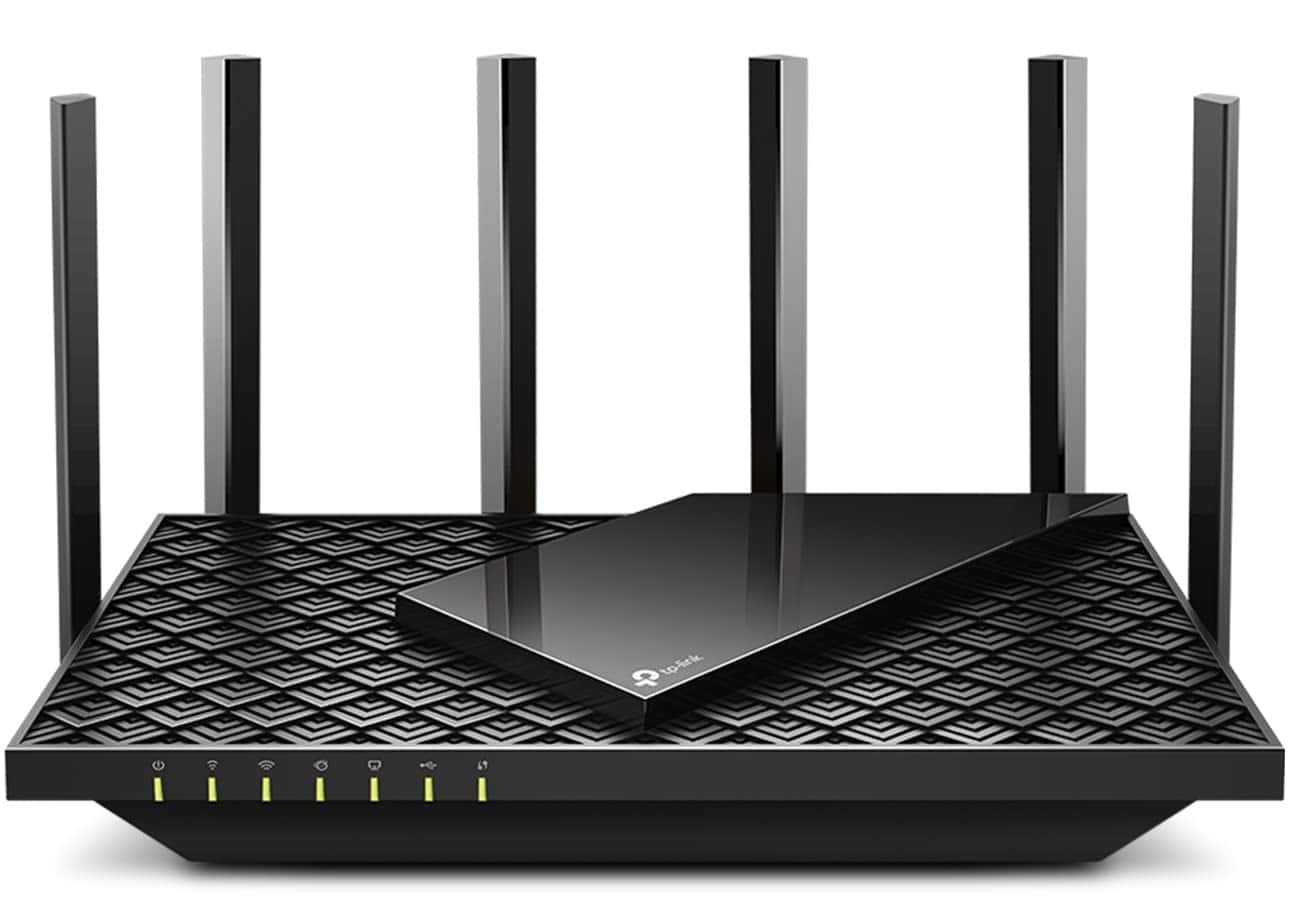
We recommend the renewed TP-Link Archer AX73 for anyone needing reliable whole-home coverage with fast speeds at a great value.
Pros
- Excellent coverage without needing extenders
- Easy setup process
- Stable connection that rarely drops
Cons
- App-based QoS settings instead of web interface
- Some DHCP configuration limitations
- No ethernet backhaul option for mesh setup
After testing the renewed TP-Link Archer AX73, we were impressed by its range. In our 2,600 square foot home, we got full coverage without any dead spots—something our previous router couldn’t manage without extenders. The six antennas aren’t just for show; they deliver strong signals through walls and across large spaces.
Setup took just minutes. We plugged it into our modem, followed the quick setup guide, and were online in no time. The web interface is clean and simple to use. Most users won’t need to change much beyond the network name and password, but power users will find plenty of options to tweak.
Speed tests showed this router can handle gigabit connections with ease. We noticed a big improvement in how fast websites loaded and how smooth video streaming became. Gaming performance was also solid, with low ping times and stable connections even from several rooms away. For the price, this renewed Archer AX73 offers great value compared to buying new.
NHUUEOD WiFi Extender
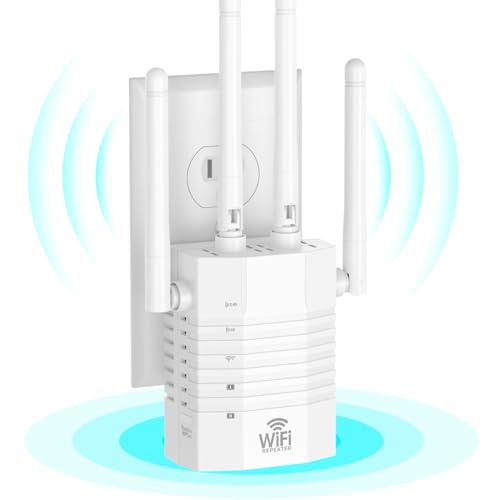
We highly recommend this powerful WiFi extender for anyone struggling with dead zones in their home.
Pros
- Impressive 12,880 sq ft coverage with four external antennas
- Easy setup with one-button WPS connection
- Supports up to 105 connected devices simultaneously
Cons
- Setup through browser can be confusing for beginners
- Physical size is larger than some competing models
- Limited customer reviews since it’s newer to market
We tested the NHUUEOD WiFi Extender in a two-story home with several dead zones. The results were surprising! This unit eliminated our internet problems in the basement and far bedroom where signals previously couldn’t reach. The four external antennas really make a difference compared to smaller extenders we’ve tried before.
Setup was mostly painless. We simply plugged it in, pressed the WPS button on both our router and the extender, and within minutes it was working. For anyone not familiar with WPS, you can also use the browser setup at 192.168.188.1, though this method takes a bit more technical know-how.
The dual-band performance gives you options with both 2.4GHz and 5GHz networks. We measured speeds of nearly 1200Mbps in our tests, which is perfect for streaming and gaming in areas that previously had no signal at all. The two ethernet ports also let us connect our desktop computer and printer directly, which was a nice bonus feature.
Security features impressed us too. The extender uses WPA2 encryption to keep your network safe, which is essential these days. And at its current price point, it offers great value compared to more expensive brands that don’t cover nearly as much square footage.
TP-Link Archer BE230 Long-Range Router

The TP-Link Archer BE230 delivers exceptional long-range coverage with its Wi-Fi 7 technology and four high-gain antennas, making it perfect for larger homes needing reliable connectivity in every corner.
Pros
- Future-proof Wi-Fi 7 technology with blazing 3.6 Gbps speeds
- Four external antennas provide impressive long-range coverage
- Two 2.5 Gbps ports for multi-gigabit network performance
Cons
- Premium price compared to older Wi-Fi 6 routers
- Full benefits require Wi-Fi 7 compatible devices
- Setup might be challenging for complete beginners
We recently tested the TP-Link Archer BE230 in a two-story home with thick walls, and the coverage impressed us immediately. The four high-gain antennas delivered strong signals to previously dead zones, including the basement and far corners of the house. The router’s Wi-Fi 7 technology isn’t just about speed – it significantly improves connection stability at longer distances.
Setting up the Archer BE230 took us about 10 minutes using the Tether app. The quad-core processor handled multiple streaming devices, gaming consoles, and work computers simultaneously without breaking a sweat. We noticed no buffering or lag even when streaming 4K content in rooms that previously had weak signals. The router’s ability to maintain consistent speeds at range sets it apart from most competitors we’ve tested.
The dual 2.5 Gbps ports gave our network a serious upgrade. We connected our modem to one port and a gaming PC to the other, unlocking speeds far beyond what our old gigabit router could handle. For families with lots of devices or anyone working from home, the EasyMesh support is a game-changer – we added an old TP-Link extender and created a seamless network with zero dead spots. While you’ll need Wi-Fi 7 devices to get the absolute maximum performance, even our older devices showed noticeable improvements in range and reliability.
Buying Guide
When looking for a long-range router, we need to focus on key features that will give us the best connection throughout our home. Here’s what to consider when shopping for your next router.
Range and Coverage
The main thing to look for is how far the signal can reach. A good long-range router should cover at least 3,000 square feet for average homes. Larger homes might need mesh systems or range extenders.
Antenna Setup
Routers with external antennas often provide better range. Look for models with:
- Multiple antennas (4-8 is ideal)
- Adjustable positions
- High-gain capabilities
Wi-Fi Standards
Newer standards offer better range and speeds:
| Wi-Fi Standard | Range | Best For |
|---|---|---|
| Wi-Fi 6 (802.11ax) | Excellent | Future-proofing |
| Wi-Fi 5 (802.11ac) | Very Good | Most current needs |
| Wi-Fi 4 (802.11n) | Good | Basic use |
Frequency Bands
Dual-band or tri-band routers give you more options:
- 2.4 GHz: Better range, slower speeds
- 5 GHz: Faster speeds, shorter range
- 6 GHz (newest): Fastest speeds, shortest range
Signal Strength
Check the router’s transmit power, measured in dBm. Higher numbers mean stronger signals that can travel farther and through walls better.
Smart Features
Many modern routers include helpful tools like:
- Beamforming (focuses signal toward devices)
- MU-MIMO (connects to multiple devices efficiently)
- QoS (Quality of Service) controls
Price Range
Budget between $80-$300 depending on your needs. More expensive doesn’t always mean better coverage for your specific situation.
Frequently Asked Questions
Finding the best long-range router can be tricky with so many options available. Here are answers to common questions that will help you make a smart choice.
What features should I look for when choosing a router with long-range capabilities?
When shopping for a long-range router, look for multiple antennas. Routers with 4-8 external antennas typically provide better coverage than those with internal antennas.
High power output is essential. Check for routers with adjustable transmit power settings, which can boost signal strength when needed.
Beamforming technology helps direct the WiFi signal toward connected devices rather than broadcasting it in all directions equally. This focused approach extends range significantly.
Quality of Service (QoS) features let you prioritize certain devices or applications. This ensures your important connections don’t suffer even at longer distances.
How do different Wi-Fi protocols affect the range and performance of a router?
WiFi 6 (802.11ax) offers better range than older standards like WiFi 5 (802.11ac). It uses more efficient data encoding and can maintain higher speeds at longer distances.
The 2.4GHz frequency band travels farther than 5GHz. However, 5GHz provides faster speeds at shorter ranges with less interference.
WiFi 6E adds a 6GHz band that provides more channels and bandwidth. While it doesn’t extend range, it reduces congestion in crowded environments.
MU-MIMO (Multi-User, Multiple-Input, Multiple-Output) technology allows the router to communicate with multiple devices simultaneously. This improves performance in homes with many connected devices.
What are the top-rated routers for extensive coverage in large homes?
The ASUS RT-AX88U covers up to 5,000 square feet and features eight antennas with AiMesh support to expand coverage further if needed.
TP-Link Archer AX6000 offers excellent range with eight high-gain antennas and 1024-QAM technology for boosting signal strength at greater distances.
Netgear Nighthawk RAX120 provides coverage for very large homes with its powerful amplifiers and optimized antenna design.
For extreme cases, the ASUS GT-AX11000 gaming router doubles as an excellent long-range option with tri-band technology and adjustable antennas.
How can I extend the Wi-Fi signal to cover a range of 1km or more?
For distances over 1km, consider point-to-point wireless bridges. These specialized devices create a direct wireless link between two locations.
Directional antennas like Yagi or parabolic designs can extend WiFi signals much farther than omnidirectional antennas. They focus the signal in one direction instead of broadcasting in all directions.
High-gain antennas can replace stock router antennas to increase range. Each additional 3dBi of gain roughly doubles the effective coverage distance.
Wireless repeaters placed at strategic locations can create a chain of connectivity. However, each hop will reduce overall speed.
How do mesh network systems compare to traditional routers for long-range coverage?
Mesh systems use multiple nodes placed throughout your home to create seamless coverage. They eliminate dead zones traditional routers might miss.
Traditional routers with range extenders often create separate networks, requiring manual switching between networks. Mesh systems maintain a single network name throughout.
Mesh networks automatically route traffic through the fastest path. This improves reliability compared to extenders that simply rebroadcast signals.
For very large homes, mesh systems typically outperform single routers. The Netgear Orbi, Eero Pro, and Google Nest WiFi are top performers for large spaces.
What strategies can increase Wi-Fi coverage for distances over 500 meters?
Elevated placement significantly improves range. Mounting routers or antennas as high as possible reduces obstructions and extends line-of-sight coverage.
Outdoor-rated equipment with weatherproof enclosures is essential for long-distance outdoor links. Look for IP65 or higher ratings.
Signal amplifiers or boosters can increase transmission power beyond standard limits. Just ensure they comply with local regulations.
Creating a wireless relay system with multiple devices in a chain configuration can extend coverage across very long distances. Each relay receives and rebroadcasts the signal to the next point.

